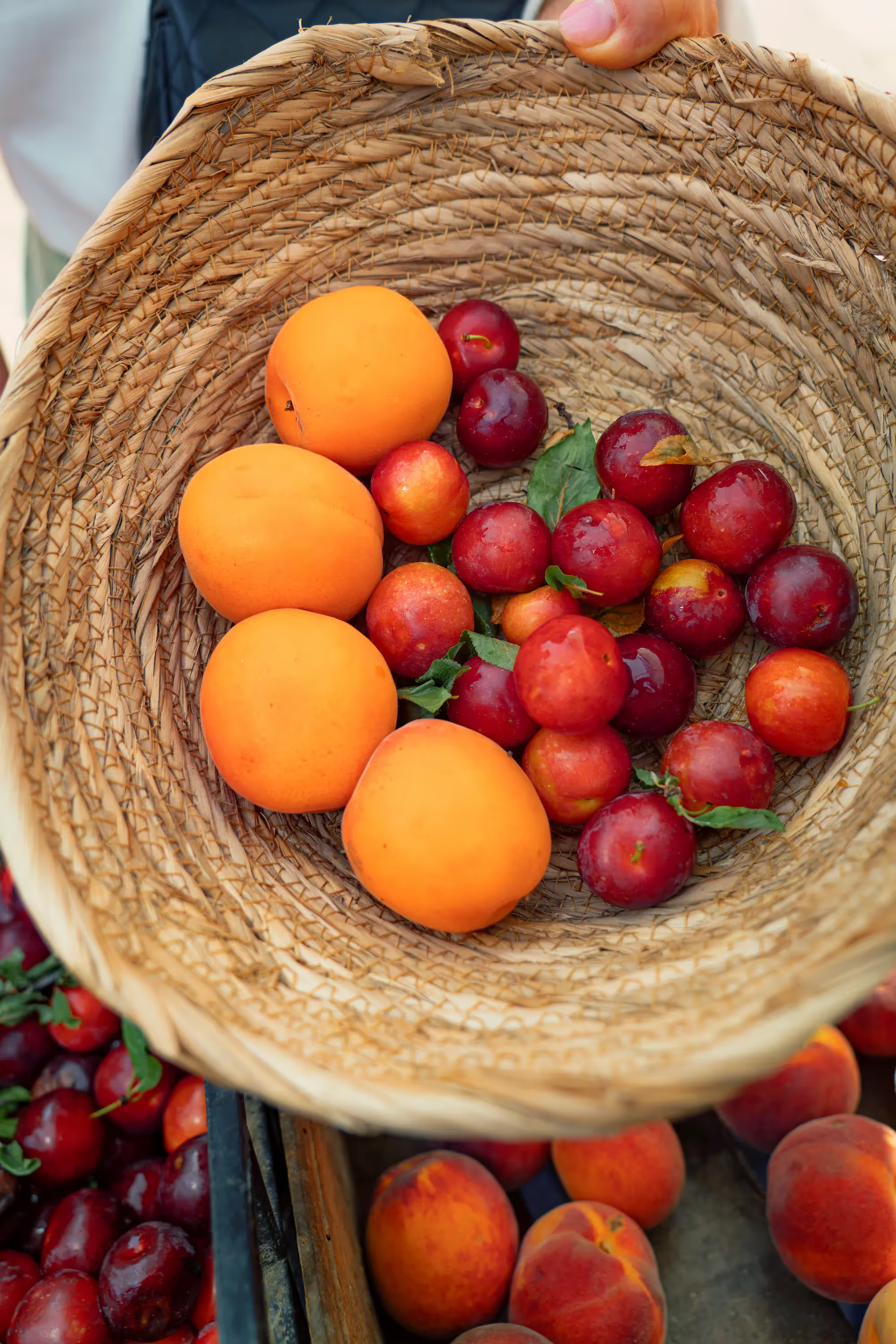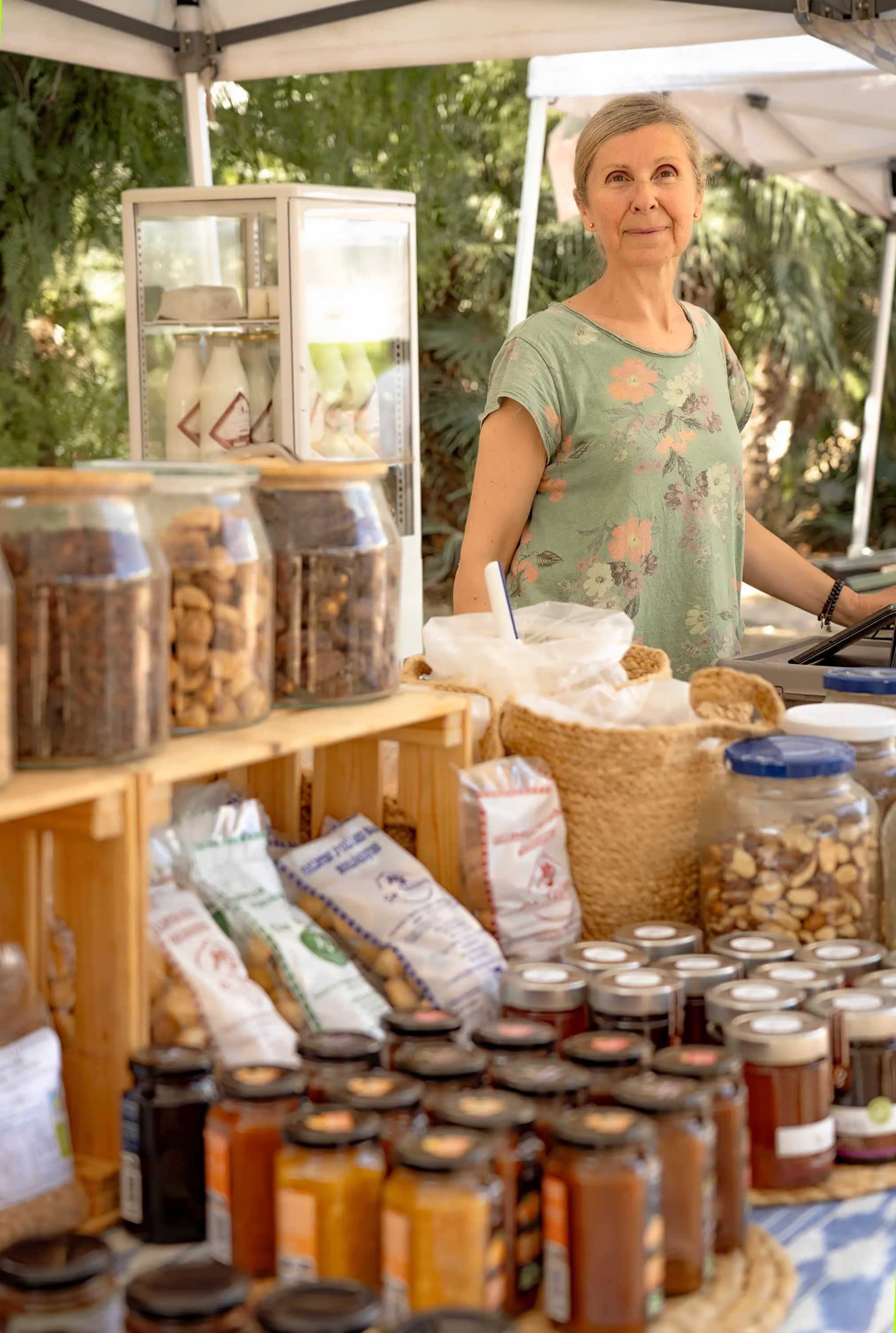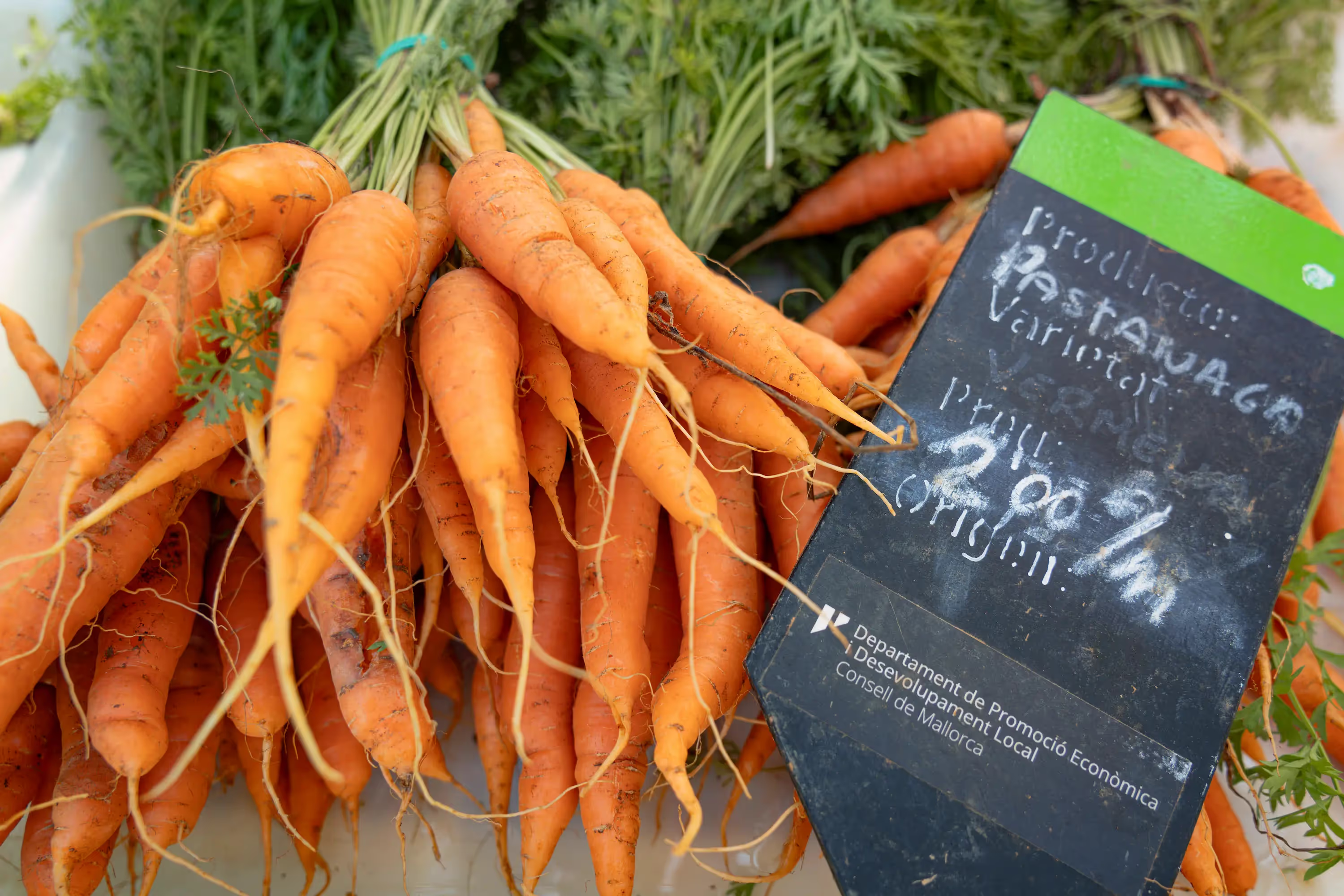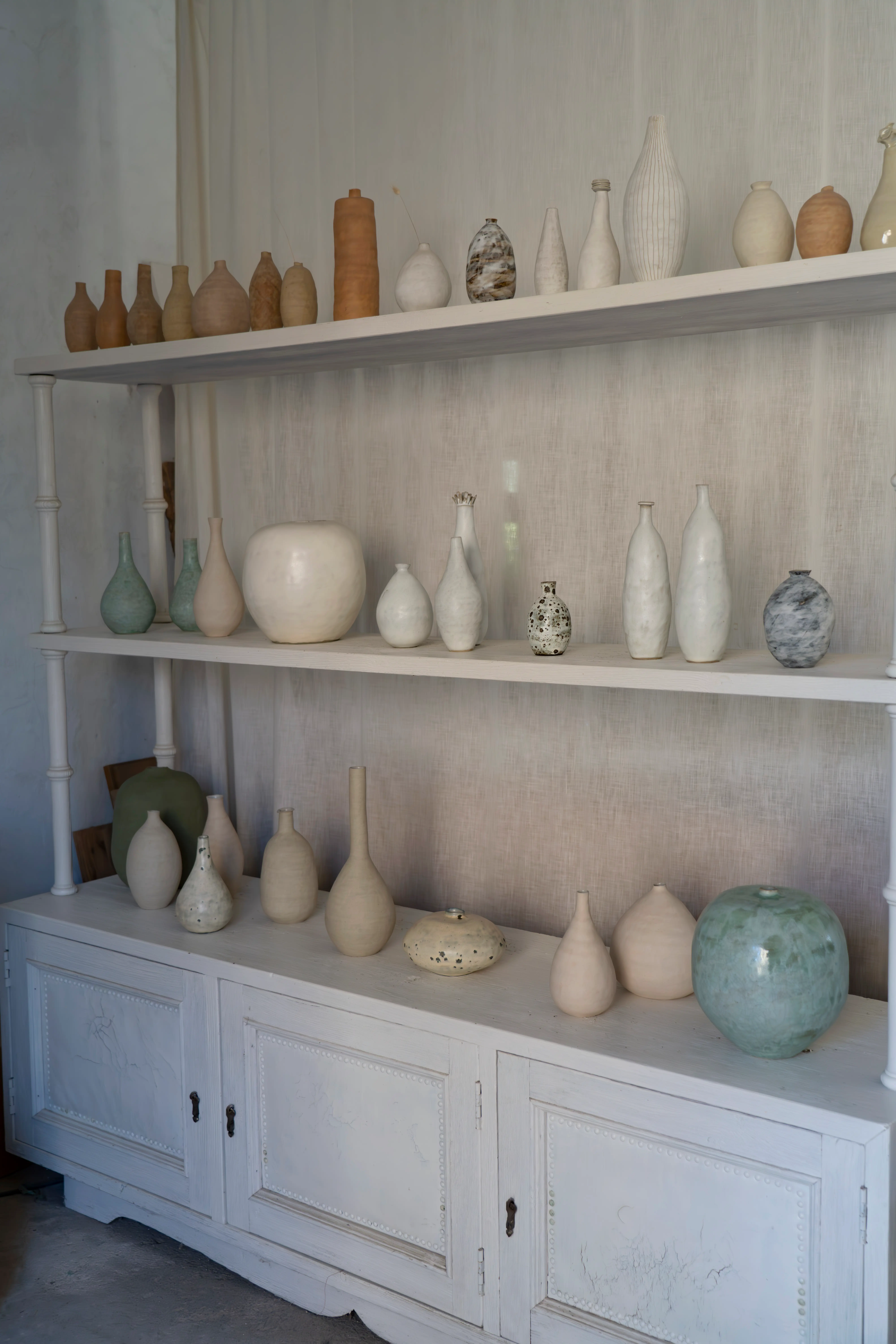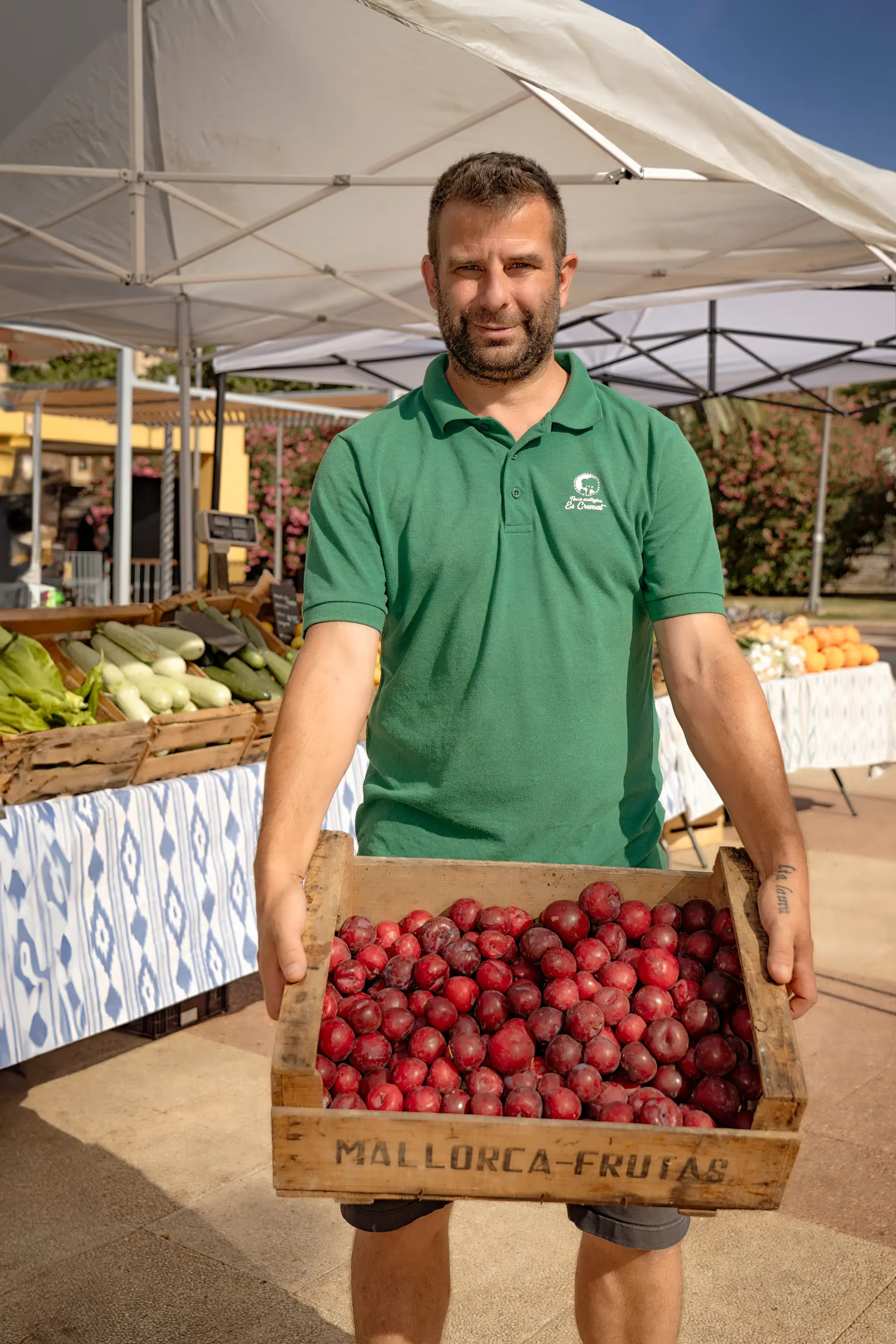
A
cross the stalls of the organic market in Plaça dels Patín in Palma, ramallet tomatoes, oddly shaped lemons and rustic squash tell much more than just the story of a farming method: they embody a political choice, a fight against climate change and a living memory. Here, we meet the people who are defending ecological agriculture in Mallorca, a combination of farming history, environmental awareness and knowledge in transition.
“What we call agro-ecology today is what our grandparents used to do,” explains Nofre Fullana, technical director of APAEMA, the association of ecological producers in Mallorca. Born into a family from the island's Levant region, this doctor of agricultural history recounts a region long shaped by collective labour and rustic know-how.
In the 1950s, agriculture was the island's main activity. At the time, Mallorca had more than 40,000 farms - compared with 10,000 today, of which barely a thousand are still in business. The landscape forms a complex agroforestry patchwork: the flat, stony land is home to cereals, pulses and market vegetables, if there is water; the mountainous terrain is home to cows and sheep; the poor soils are home to almond, carob and fig trees, with sheep grazing freely.
This mosaic is the result of a historical shift: at the end of the 19th century, the model of the large feudal estates, with their large workforces and low yields, reached the end of its tether. These estates were fragmented and sold off in small parcels. The new model was based on a small, intensive estate with an organic base. They practised multi-stage farming - cereals, pulses, fruit trees - geared towards the market, with some self-consumption.

